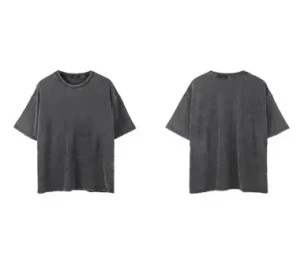Custom walk in closets offer a unique blend of functionality and style that can transform any home. These personalized spaces not only provide ample storage but also enhance the overall aesthetic of a bedroom, reflecting individual taste and organization needs. Homeowners increasingly seek tailored designs that maximize space while incorporating features that suit their lifestyles.
Incorporating elements such as lighting, shelving, and built-in drawers can elevate the walk-in closet experience. Customization allows for a unique approach, ensuring that no two closets are alike. This personal touch can make a significant difference in daily routines, providing a designated area for clothing and accessories.
Investing in a custom walk-in closet can fundamentally change how one interacts with their belongings. With thoughtful design, these closets can streamline morning routines and create a clutter-free environment that feels inviting and functional.
Designing Your Custom Walk-In Closet
Creating a custom walk-in closet requires careful planning and attention to detail. Prioritizing space, layout, materials, and lighting ensures a functional and aesthetically pleasing design.
Determining Space Requirements
Before embarking on a walk-in closet project, measuring the available space is crucial. Homeowners should evaluate the existing room dimensions and consider any obstacles, such as windows or doors. A minimum area of 70 square feet is advisable for a comfortable layout.
Tables or charts can aid in visualizing space allocation. For example, a typical design can allocate:
| Area | Square Feet |
| Hanging rods | 20 |
| Shelving | 15 |
| Drawers | 10 |
| Access space | 25 |
Understanding these requirements leads to a more efficient use of space.
Selecting a Layout
Designing an effective layout starts with deciding between various configurations, such as L-shaped, U-shaped, or corridor styles. The layout should reflect personal storage needs, balancing efficiency and access.
L-shaped designs utilize corners effectively, while U-shaped ones maximize storage capacity. Corridor layouts offer a streamlined approach, ideal for narrower spaces.
Visual aids, such as floor plans or 3D designs, can help visualize layouts. Incorporating islands or multi-purpose furniture may enhance functionality and aesthetics.
Choosing Materials and Finishes
Selecting the right materials and finishes enhances the closet’s appearance and durability. Common choices include wood, laminate, or metal for shelving and cabinetry. Opt for finishes that complement the home’s overall style.
Storage solutions can include features like adjustable shelves, soft-close drawers, and pull-out racks. High-quality materials not only add visual appeal but also ensure longevity.
Popular finishes might include:
- Matte or gloss paint for cabinetry
- Natural wood for a warm feel
- Metal accents for contemporary designs
The right materials can make a significant difference in usability and style.
Incorporating Lighting Solutions
Effective lighting transformations are essential in a custom walk-in closet. Adequate illumination enhances visibility, allowing for easier selection of outfits and accessories.
Homeowners can consider a mix of ambient, task, and accent lighting. LED strip lights along shelves can provide a modern touch, while pendant lights add elegance.
Lighting Options:
- Recessed lighting: Offers a sleek, unobtrusive approach.
- Smart lighting: Automatically adjusts based on occupancy or brightness levels.
- Dimmable fixtures: Allow customization of brightness to create desired moods.
Strategic placement of lighting improves functionality and ambiance, making the closet a welcoming space.
Organizational Features of Walk-In Closets
A well-designed walk-in closet incorporates various organizational features to enhance functionality and streamline storage. Focused on efficiency, these elements help to maximize available space, ensuring belongings are easily accessible and orderly.
Custom Shelving and Drawers
Custom shelving options allow for tailored storage that fits the individual’s needs. Adjustable shelves can accommodate different item sizes, from clothing to accessories.
Incorporating deep drawers adds versatility, providing a place for folded items or other belongings.
Key Benefits of Custom Shelving and Drawers:
- Adjustability: Freely adjust shelf heights based on the user’s preferences.
- Maximized Space: Utilize vertical space effectively for optimal storage.
- Style Options: Variety of materials and finishes to match decor.
Personalization is crucial, as it creates a space that reflects individual style while maintaining practicality. Custom designs enable efficient use of every inch.
Accessory Storage Options
Accessory storage solutions add functionality and organization to a walk-in closet. Dedicated compartments for belts, ties, and scarves promote visual organization.
Accessory Storage Ideas Include:
- Pull-Out Racks: Easily store and access ties or scarves.
- Belt Hooks: Keep belts untangled and visible.
- Jewelry Trays: Sectional storage for easier visibility of jewelry.
Using these tailored solutions prevents clutter, making selecting accessories quick and intuitive. Such systems enhance personal style while keeping the closet organized.
Shoe Storage Solutions
Effective shoe storage is vital in a walk-in closet. Various methods exist to showcase and protect footwear while maximizing space.
Popular Shoe Storage Options:
- Shoe Racks: Stackable designs fit multiple pairs.
- Cubbies: Individual compartments keep shoes organized.
- Over-the-Door Solutions: Utilize behind-the-door space for maximal efficiency.
Incorporating these solutions not only keeps shoes orderly but also makes them easily accessible. A well-organized shoe display can enhance the overall aesthetics of the closet. With thoughtful consideration, shoe storage options can transform the functionality and appearance of a walk-in closet.





